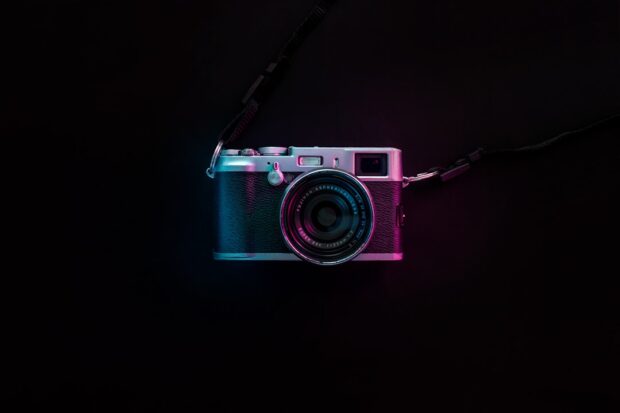
The Cheatcodes to Mastering the Art of Focus in 2024

The Importance of Focus in a Distracted World
The Art of Focus is all about mastering your attention and boosting your productivity. If you’re looking to level up as a creator, you first need to master how to focus.
The the key ideas are:
- Set clear goals: Understand what you want so you can channel your energy effectively.
- Visualize your end goal: Make your desires concrete to align your mind and actions.
- Prioritize tasks: Focus on high-impact activities and use time management techniques.
- Manage your emotions: Cultivate positive emotions and practice mindfulness.
In our , distraction-filled world, the ability to focus has become a rare and invaluable skill. It’s not just about getting more done, but about performing at your best and enjoying a sense of fulfillment. When you focus deeply, you can solve complex problems, innovate, and produce high-quality results, all of which ar e crucial for success in today’s digital economy.
I’m digitaljeff. With over 20 years of experience in tech, digital media, and content strategy, I’ve helped top brands sharpen their focus and scale their online presence. My journey has shown me that working smart, not just hard, is essential for achieving your goals.
Let’s dive into how you can master The Art of Focus.

Set Clear Goals
Define Your Desires
The foundation of effective focus lies in a clear understanding of your desires. It is impossible to be successful if you are indecisive about your own wishes, dreams, and goals. Reflect on what truly matters to you and how your values influence your aspirations. This self-inquiry is the fundamental first step in being able to design your ideal life.
Knowing what you desire provides you with a roadmap and enables you to channel your energy towards the most meaningful pursuits. Not everyone needs a lofty purpose in life, but in order to be happy, we all need to act in a way that aligns with our true desires.
Questions for Self-Inquiry:
- What are your deepest and most pressing desires?
- What are the things you want above all else?
- How do your values influence your goals?
Tip: Take time to write down your answers. This exercise in self-inquiry is the very thing that will fuel your progress in life.
Visualize the End Goal
Before you can manifest any of your desires, you have to give form to them. It is difficult to focus on a vague, nonspecific wish. In the absence of pertinent details, your desires can become elusive. Use your imagination to create a mental blueprint. Visualization is a powerful tool that can assist with this.
How to Visualize:
- Paint a Vivid Picture: Imagine yourself achieving what you want and experiencing the fulfillment of your aspirations.
- Consistent Visualization: As you consistently visualize the desired outcomes, your subconscious mind becomes more aligned with them.
- Align Your Actions: This alignment fuels your focus, helping you make the right decisions, steer challenges, and stay on course.
Example: Athletes often use visualization to improve performance. By imagining themselves executing a perfect routine, they align their mental state with their physical actions, leading to better results.
By defining your desires and visualizing the end goal, you can set clear objectives and create a roadmap that aligns with your values and aspirations. This is the first step toward mastering The Art of Focus.
Prioritize Tasks
Identify Important Tasks
In the journey to mastering The Art of Focus, identifying important tasks is crucial. Not all tasks carry the same weight. Some activities propel you toward your goals, while others simply eat up your time.
High-impact activities are those that significantly contribute to your goals. To identify these, ask yourself:
- Does this task align with my main objectives?
- Will completing this task move me closer to my end goal?
- Is this task urgent or just seemingly important?
Task prioritization is about separating the wheat from the chaff. Use the Eisenhower Matrix to categorize tasks into four quadrants: urgent and important, important but not urgent, urgent but not important, and neither. This helps you focus on high-impact tasks that align with your goals.
Goal alignment ensures that your daily tasks are steps toward your larger aspirations. By identifying and prioritizing tasks that matter, you conserve energy and maximize productivity.
Use Time Blocking
Once you’ve identified your high-impact activities, the next step is effective time management. This is where time blocking comes in. Time blocking is a method where you allocate specific chunks of your day to different tasks. This technique helps you maintain focus and reduces the cognitive load of constantly switching between tasks.
To implement time blocking:
- Plan Your Day: At the beginning of your day or the night before, allocate specific time blocks for your tasks. Include breaks and buffer times for unexpected tasks.
- Use Categories: Group similar tasks together to minimize the cognitive load of switching between different types of work.
- Limit Multitasking: Focus on one task at a time to improve the quality of work and reduce distractions.
- Adjust as Necessary: Be flexible. Some tasks may take longer than anticipated, while others may be completed more quickly.
- Evaluate and Optimize: At the end of each day or week, review what you accomplished during your time blocks and make adjustments as needed.
Daily routines are proven to support cognitive function. They act as guardrails to prevent you from falling off track.
Manage Your Emotions
Managing your emotions is crucial for maintaining focus. Emotions can either fuel your productivity or derail it. By cultivating positive emotions and practicing mindfulness, you can create a stable emotional state that improves concentration.
Cultivate Positive Emotions
Positive emotions play a big role in your ability to focus. When you’re happy, you’re more likely to concentrate and be productive. Here are a few ways to cultivate positive emotions:
- Positive Reinforcement: Reward yourself for small achievements. This can boost your mood and motivation.
- Gratitude Practice: Spend a few minutes each day to reflect on things you’re grateful for. This simple practice can shift your emotional state.
- Surround Yourself with Positivity: Spend time with people who uplift you and engage in activities that you enjoy.
Dan Koe mentions that self-regulating your emotional state helps you stay in control, rather than letting your emotions control you. This is key to mastering THE ART OF FOCUS.
Practice Mindfulness
Mindfulness is about being present in the moment. It helps you observe your emotions without getting swept away by them. This leads to better self-awareness and emotional control. Here are some mindfulness techniques you can try:
- Breathing Exercises: Simple breathing exercises can help calm your mind and improve focus. Try inhaling deeply for four counts, holding for four, and exhaling for four.
- Mindful Observation: Take a few minutes to observe your surroundings without judgment. This can help ground you and bring your attention back to the present.
- Body Scan: Close your eyes and mentally scan your body from head to toe, noticing any tension or discomfort. This can help you become more aware of your physical and emotional state.
According to the research, practicing mindfulness helps in emotional observation and self-awareness, which are crucial for maintaining focus.
By cultivating positive emotions and practicing mindfulness, you can manage your emotional state effectively. This will not only improve your focus but also improve your overall well-being.
Next, we’ll explore how to Take Inspired Action to turn your goals into reality.
Take Inspired Action
Organize Your Life
To achieve your goals, you need to organize your life effectively. This starts with forming productive habits and creating a daily structure that supports your aspirations. Here’s a simple process to get started:
- Pull out a notebook: Write down what you are doing and why you do it at every minute of the day.
- Track your feelings: Note how you feel in the morning, afternoon, and night.
- Prioritize and restructure: Be honest with yourself. Remove activities that don’t serve your goals and restructure your day to make room for what matters.
Use this data to create a weeklong system. Plan out your morning routine, focused work sessions, other tasks, and nightly routine. Keep iterating on this plan weekly to refine what works best for you.
Progress tracking is essential. By consistently monitoring your habits and adjusting as needed, you ensure that your actions remain aligned with your goals.
Avoid Wasting Time
Time is your most valuable resource. Efficient effort means focusing on actions that bring you closer to your goals without unnecessary distractions. Time management techniques can help you carve out dedicated periods for high-impact activities.
Here’s a quick guide:
- Identify important tasks: List tasks that align with your goals.
- Block your time: Allocate specific time slots for these tasks. For example, dedicate 9 AM to 11 AM for focused work.
- Minimize distractions: Create a distraction-free environment. Turn off notifications and set boundaries with others.
Goal alignment is key. If an activity doesn’t bring you closer to your goals, it’s a distraction. Focus on actions that are efficient and goal-oriented to maximize your productivity.
By organizing your life and avoiding time-wasting activities, you can take inspired action to achieve your goals and master THE ART OF FOCUS.
Ignore Distractions
Create a Distraction-Free Environment
Distractions are everywhere. To master THE ART OF FOCUS, you need to create an environment that supports concentration.
Environment Setup: Start by setting up a dedicated workspace. This should be a place where you feel comfortable and focused. Make sure it’s clean and organized. Clutter can be a major distraction.
Focus Zones: Designate specific areas for different activities. For example, have a “work zone” where you do all your productive tasks and a “relaxation zone” where you unwind. This helps your brain switch modes more easily.
Minimalism: Keep your workspace minimal. Only keep items that are essential for your tasks. This reduces visual distractions and helps you stay focused.
Turn Off Notifications: One of the biggest distractions is your phone. Turn off notifications or put your phone on airplane mode while you work. This way, you won’t be tempted to check messages or social media.
Set Boundaries: Let others know when you are in your “focus zone”. This could mean closing your office door or wearing noise-canceling headphones. Setting these boundaries helps others understand that you need uninterrupted time.
Stay True to Your Desires
Staying true to your desires is crucial for maintaining focus. When you know what you want, it’s easier to ignore distractions.
Authenticity: Be true to yourself. Know what you want and why you want it. This helps you stay motivated and focused.
Self-Alignment: Align your daily activities with your goals. If an activity doesn’t bring you closer to your goals, it’s a distraction.
Comparison Avoidance: Don’t compare yourself to others. This can lead to confusion and distraction. Focus on your own journey and what you need to do to achieve your goals.
Routine Building: Create routines that support your goals. For example, start your day with a morning routine that sets a positive tone. This could include activities like meditation, exercise, or planning your day.
Mindfulness: Practice mindfulness to stay present. This helps you manage your emotions and stay focused on the task at hand.
By creating a distraction-free environment and staying true to your desires, you can master THE ART OF FOCUS and achieve your goals.
Manage Your Energy
Recognize Energy Sources
To master THE ART OF FOCUS, you must first understand where your energy comes from and where it goes. Your energy is like a battery that can be charged or drained depending on your activities, environment, and interactions.
Energy Gains: Identify activities and people that boost your energy. For example, engaging in hobbies, spending time with loved ones, or exercising can recharge your personal reserves.
Supportive Environments: Surround yourself with environments that promote focus and positivity. A clean, organized workspace can significantly improve your mental clarity and productivity.
Energy Exertion: Be mindful of where you spend your energy. Tasks that align with your goals and values should take priority. This concept ties back to the idea of focusing your energy on designing the life of your dreams.
Detach from Energy Drains
Just as important as recognizing energy sources is identifying and detaching from energy drains. These are activities, environments, or people that sap your energy and hinder your focus.
Negative Influences: Limit your exposure to negative influences. This might mean setting boundaries with certain individuals or avoiding environments that cause stress and distraction.
Energy Management: Actively manage your energy by scheduling breaks and incorporating relaxation techniques into your routine. Practices like meditation or short walks can help replenish your energy and maintain focus.
Focus Maintenance: Regularly assess your energy levels and make adjustments as needed. This ongoing process ensures that you stay on track and continue to make progress toward your goals.
By recognizing your energy sources and detaching from energy drains, you can better manage your personal reserves and maintain a high level of focus. Next, we’ll address some frequently asked questions about THE ART OF FOCUS.
Frequently Asked Questions about THE ART OF FOCUS
What is the art of focus?
The art of focus is the skill of directing your attention and mental resources towards a specific task or goal. It’s about minimizing distractions and maximizing efficiency. Focus helps you achieve success by allowing you to channel your energy into high-impact activities that align with your desires and aspirations. In a world filled with constant distractions, mastering focus is crucial for personal and professional growth.
How do you master the art of focus?
Mastering the art of focus involves several strategies and techniques:
- Set Clear Goals: Know what you want to achieve. Define your desires and visualize your end goals. This clarity provides a roadmap for your efforts.
- Prioritize Tasks: Identify high-impact tasks that align with your goals. Use time blocking to manage your daily routines and boost productivity.
- Manage Your Emotions: Cultivate positive emotions and practice mindfulness to stay focused. Emotional intelligence is key to maintaining concentration.
- Take Inspired Action: Organize your life and avoid wasting time on non-essential activities. Focused action leads to efficient progress.
- Ignore Distractions: Create a distraction-free environment and stay true to your desires. This helps maintain your focus on what’s important.
- Manage Your Energy: Recognize your energy sources and detach from energy drains. This ensures you have the stamina to stay focused over long periods.
What is the definition of focus in art?
In art, focus refers to the emphasis or focal point of a piece. It’s the center of interest where the viewer’s attention is naturally drawn. Artists use various techniques to create this focal point, such as contrast, color, and composition. The goal is to guide the viewer’s eye to the most important part of the artwork, creating a cohesive and engaging experience.
Conclusion
Mastering THE ART OF FOCUS is not just about improving your concentration skills; it’s about changing your entire approach to life and work. By setting clear goals, prioritizing tasks, managing your emotions, and taking inspired action, you can open up your true potential and achieve extraordinary results.
At UNSIGNED UNIVERSITY, we believe in empowering individuals to thrive in the digital age. Our comprehensive resources and expert guidance are designed to help you cultivate focus, boost productivity, and build a fulfilling career. We are committed to supporting you on your journey to mastering THE ART OF FOCUS.
As we steer this digital renaissance, the ability to focus is more critical than ever. The world is full of distractions, but with the right strategies and mindset, you can rise above them and create a life of purpose and success.
Ready to boost your mental capacity and take your productivity to the next level? Explore our resources and join our community at UNSIGNED UNIVERSITY. Together, we can achieve greatness.
By embracing the principles of THE ART OF FOCUS, you are not only enhancing your personal and professional life but also contributing to a broader movement towards a more mindful and purpose-driven world. Stay focused, stay inspired, and continue to push the boundaries of what’s possible.
















